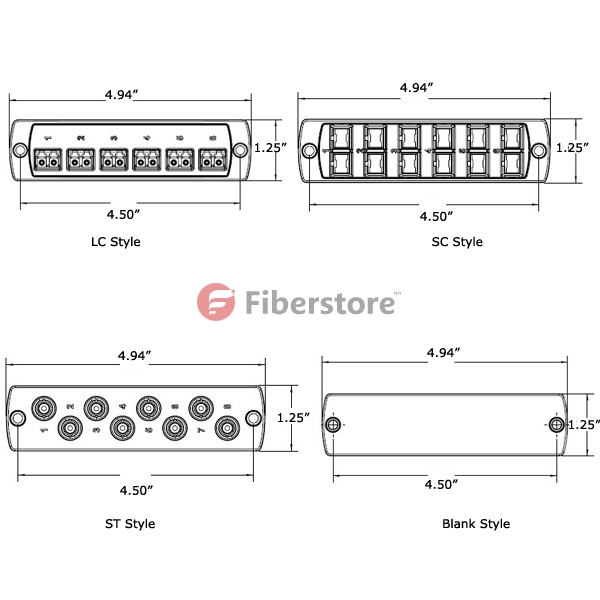As we know, fiber optic cable has a very small core that can be easily damaged if it is not protected well. Also, to insure to the minimum size of a fiber optic loop and not violate the critical angle, we need to have a way to keep excess fiber optic patch cables, as well as terminated building fiber, neat and protected from damage. Fiber optic enclosures and patch panels allow the cable installer to protect the delicate fiber cable from damage, while still making it useful for the network administrator.
Fibre Optic Patch Panel for fiber optic cables are usually installed into the LIU (Light guide Interconnection Unit). Because the core and cladding of two fiber optic cables that are to be joined together must match perfectly, the patch panel must be manufactured to exact specifications and some standard type connector must be used to ensure a good fit. Another patch panel issue deals with attenuation. Remember from the previous discussion that when you splice or join a fiber optic cable, you can introduce additional light loss or attenuation. The same holds true for the fiber optic patch panel. The connectors on the patch panel should identify total loss at various wavelengths, and the these losses should be added to any other cable loss on that particular cable to ensure compliance with standards and goof operation of the fiber optic cable.
We all know, many fiber optic patch panels use ST style connectors, just ST fiber patch panel, whereas a significant amount of modern telecommunications equipment utilizes SC style connectors. This does not pose a problem because fiber optic patch cables are available with ST-ST connectors (ST style on both ends), SC-SC connectors, and SC-ST connector (also known as hybrids). Fiber optic patch cables are available in many different lengths. It is a good rule of thumb to use the shortest cable possible to reduce the amount of slack in the cable, thus reducing the number of loops in the cable and reducing the possibility of violating the minimum loop rule. The following Figure shown four types connectors connection.
There Are Some key Terms We Should Know:
- Attenuation: The reduction of signal strength over the length of a fiber optic cable. Attenuation is cumulative over the length of a cable run.
- Buffer coating: A durable outer coating that protects the core and cladding
- Cladding: Material surrounding the core of the fiber optic cable compose of a material with a different refractive index to provide signal reflection
- Core: Center of the fiber optic cable and made of vary small diameter, high quality glass. Data are actually transmitted over the core.
- Critical angle: The angle at which internal reflection will not occur.
- Light guide Interconnection Unit (LIU): A chassis for enclosing fiber optic patch panels used to maintain cable integrity.
- Total Internal Reflection: The principle that light will bounce off the junction between core and cladding with no signal loss.
- Refractive Index: The amount of refraction a given element will allow.
- Refraction: Light waves bending off the junction of two elements with dissimilar refractive indexes.
Fiberstore is a professional patch panel manufacturers, and it has some subsidiary corporations all over the world, except patch panels. It also has other related fiber optical products, such as fiber optic cable, fiber connectors, fiber optical transceivers and etc…they are all in hot sale, if you want to know more information, welcome to contact me at sales@fs.com or log in our website: www.fs.com directly to have a detailed understanding.
